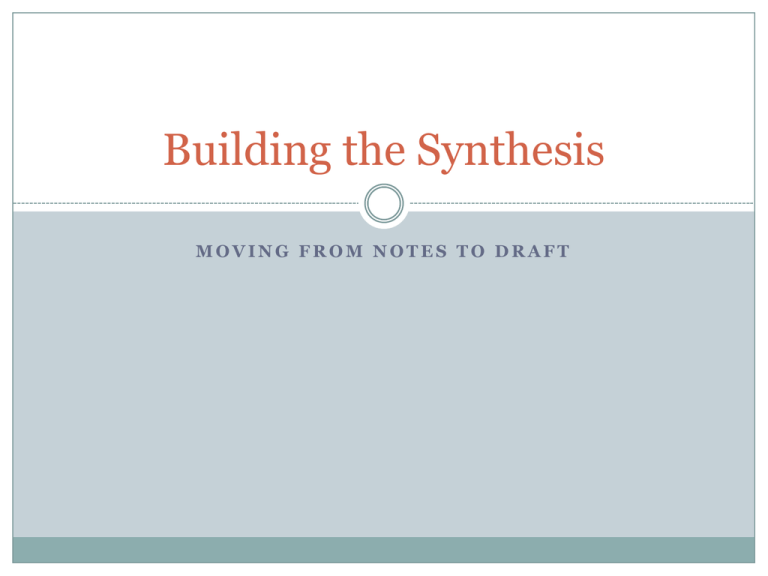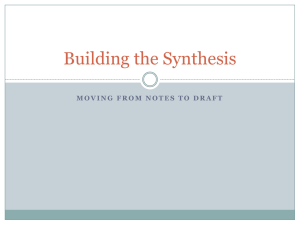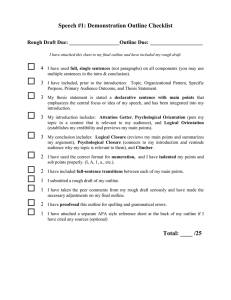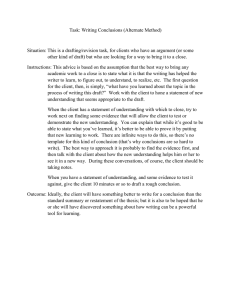Building the Synthesis
advertisement

Building the Synthesis MOVING FROM NOTES TO DRAFT Brainstorming Using the Synthesis Worksheets Review the lists of themes (right hand column) and look for patterns. What exact repetitions do you see? Which words emerge in multiple places? What kinds of strands or related words do you see? What themes intrigue or attract you? Analyzing Textual Evidence in Depth Analysis Illustration/ Evidence Analysis Analysis Example: This scene/this quotation could mean ____________, and yet it could also signify ____. Additionally, we can read __________ as ___________. Freewriting Freewrite (5 minutes) Introduce the first, strongest Illustration or piece of Evidence A line of dialogue A direct quote The description of a scene Explain or analyze that evidence What do we learn from this piece of evidence? Why is this so important? Sample: This scene/this quotation could mean ____________, and yet it could also signify ____. Additionally, we can read __________ as ___________. Sample 2: Although this scene shows _____________, it also reminds the reader that ____________. Moving from Theme to (Rough Draft) Thesis Freewriting What does each source say about this idea? Freewriting Prompt 1: After reading/watching __________ and _________, we learn that ____________. We also learn that __________________. What tensions or contradictions might be inherent in this idea? E.g. _________ seems to be saying __________, and yet it is also saying _______________. Moving from Theme to (Rough Draft) Thesis Drafting Begin composing a Rough Draft thesis based on your notes. After reading Source A and B, what have we learned about ______________? Collecting Evidence Look through your notes and the readings or film with your rough draft thesis in front of you. Gather Illustrations/Textual evidence that will support your argument. Find at least 3 quotations or scenes from each source. Gather additional evidence that might complicate or deepen your argument. Begin to Explain or Analyze your Illustration. Do this step in a rough draft capacity before putting it all together. That is, analyze each piece of evidence carefully and fully before deciding where everything will go. Moving from Evidence to Outline Begin a Conversation between Sources Find a clear, strong Illustration or piece of Evidence from Source A that you can put in conversation with a clear, strong Illustration from Source B. Throughout the essay, you will want to move between the sources. Create an Outline Begin with the two pieces of Evidence above. Build your Outline based on the conversational model How does Source A speak back to Source B – and vice versa? See Notes on Synthesis Handout for a sample outline. Understand that your Outline, like a Conversation, will remain fluid and changeable.





